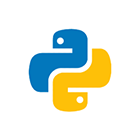What’s Included?
Prerequisites
- Basic Nursing Knowledge: Understanding of clinical practices and patient care.
- Familiarity with Healthcare Technology: Experience with electronic health records and medical devices.
- Introduction to Data Science: Understanding data analysis and interpretation in healthcare.
- Basic AI and Machine Learning Concepts: Knowledge of algorithms and predictive modeling.
- Critical Thinking and Problem Solving: Ability to make data-driven healthcare decisions.
Self Study Materials Included
Additional Resources
Supplementary references and list of tools to deepen knowledge and practical application.
Audiobooks
Listen and learn anytime with convenient audio-based knowledge sharing.
E-Books
Comprehensive digital guides offering in-depth knowledge and learning support.
Module Wise Quizzes
Interactive assessments to reinforce learning and test conceptual clarity.
Podcasts
Insightful audio sessions featuring expert discussions and real-world cases.
Videos
Engaging visual content to enhance understanding and learning experience.
Tools You’ll Master

Python

Scikit-learn

Keras

Jupyter Notebooks

Matplotlib

Power BI
What You’ll Learn
AI in Nursing Practice
Understand how artificial intelligence applies to clinical care and nursing workflows.
AI-Powered Documentation & Data Literacy
Gain skills in automating documentation and interpreting healthcare data with AI tools.
Predictive Analytics for Patient Safety
Learn to use predictive models to anticipate risks and improve patient outcomes.
Generative AI in Nursing Education
Explore how AI can support patient education, training, and decision support in nursing.
Course Modules
Module 1 - What is AI for Nurses?
1.1 Understanding AI Basics in a Nursing Context
1.2 Where AI Shows Up in Nursing
1.3 Case Study: Improving Patient Safety and Nursing Efficiency with AI at Riverside Medical Center
1.4 Hands-on: Using Nurse AI for Clinical Data Visualization in Postoperative Nursing Care
Module 2: AI for Documentation, Workflow, and Data Literacy
2.1 Introduction to Natural Language Processing
2.2 Workflow Automation: Transforming Nursing Practice
2.3 Beginner’s Guide to Data Literacy in Nursing
2.4 Legal & Compliance Basics in Nursing AI Documentation
2.5 Case Study: Integrating AI and Workflow Automation at Massachusetts General Hospital (MGH)
2.6 Hands-On Exercise: Using the ChatGPT Registered Nurse Tool in Clinical Documentation and Patient Education
Module 3: Predictive AI and Patient Safety
3.1 Understanding Predictive Models
3.2 Alert Fatigue and Trust
3.3 Simulation Activity: Responding to Real-Time Deterioration Alerts
3.4 Collaborating Across Teams
3.5 Bias in Predictions
3.6 Case Study
3.7 Hands-on Activity: Interpreting Predictive Alerts with ChatGPT
Module 4: Generative AI and Nursing Education
4.1 Introduction to Generative AI in Nursing
4.2 Large Language Models (LLMs) for Nurses
4.3 Creating Patient Education Materials with AI
4.4 Ensuring Safe and Ethical Use of AI
4.5 Case Study
4.6 Hands-On Activity: Exploring AI-Powered Differential Diagnosis with Symptoma
Module 5: Ethics, Safety, and Advocacy in AI Integration
5.1 Bias, Fairness, and Inclusion
5.2 Informed Consent and Transparency
5.3 Nurse Advocacy and Professional Responsibilities
5.4 Creating an Ethics Checklist
5.5 Stakeholder Feedback Techniques
5.6 Legal and Regulatory Considerations
5.7 Psychological and Social Implications
5.8 Case Study: Addressing Racial Bias in Healthcare Algorithms (Optum Algorithm Case).
5.9 Hands-on: Uncovering Bias in Diabetes Risk Prediction: A Fairness Audit Using Aequitas
Module 6: Evaluating and Selecting AI Tools
6.1 Understanding Performance Metrics
6.2 Vendor Red Flags
6.3 Nurse Role in Selection
6.4 Evaluation Templates and Checklists
6.5 Use Cases: AI in Clinical Decision-Making
6.6 Case Study: Using AI to Enhance Real-Time Clinical Decision-Making at UAB Medicine with MIC Sickbay
6.7 Hands-on: Evaluating AI Diagnostic Model Performance Using Confusion Matrix Metrics
Module 7: Implementing AI and Leading Change on the Unit
7.1 Building Buy-In: Promoting AI as an Ally, Not a Competitor
7.2 Change Management Essentials
7.3 Creating an AI Playbook: A Comprehensive Roadmap for Sustainable Success
7.4 Monitoring Quality Improvement: Leveraging AI Metrics for Continuous Enhancement
7.5 Error Reporting and Safety Protocols: Ensuring Safe and Reliable AI Integration
7.6 Hands-On Activity: Calculating Clinical Risk Scores and Visualization with ChatGPT
Frequently Asked Questions
Yes, you’ll gain practical skills through nursing-focused case studies and projects, ready to apply AI tools in patient care.
It combines nursing practice with hands-on AI training, focusing on workflow efficiency, patient monitoring, and care delivery.
You’ll work on AI-powered patient monitoring, EHR documentation, predictive alerts, and workflow optimization tailored to nursing.
The course blends expert-led lessons, interactive modules, and case-based nursing simulations for strong practical learning.
It builds in-demand AI nursing skills with real-world projects and prepares you for roles in AI-driven healthcare.